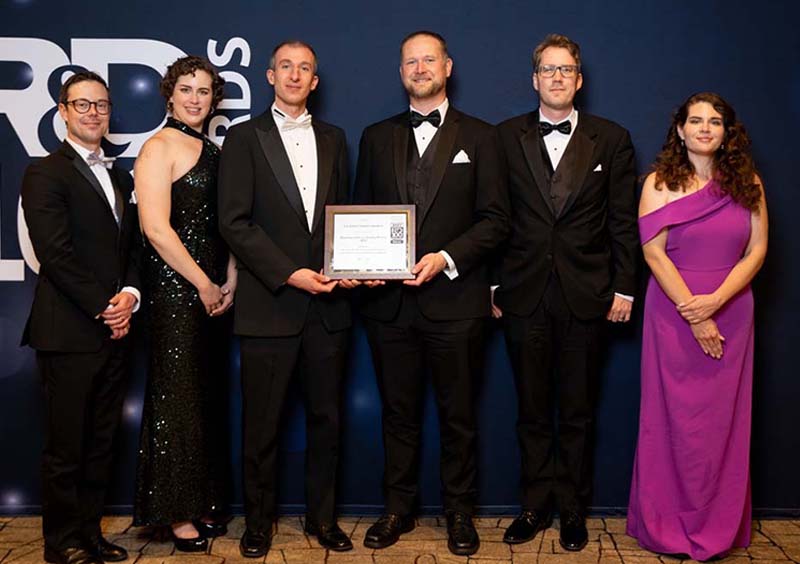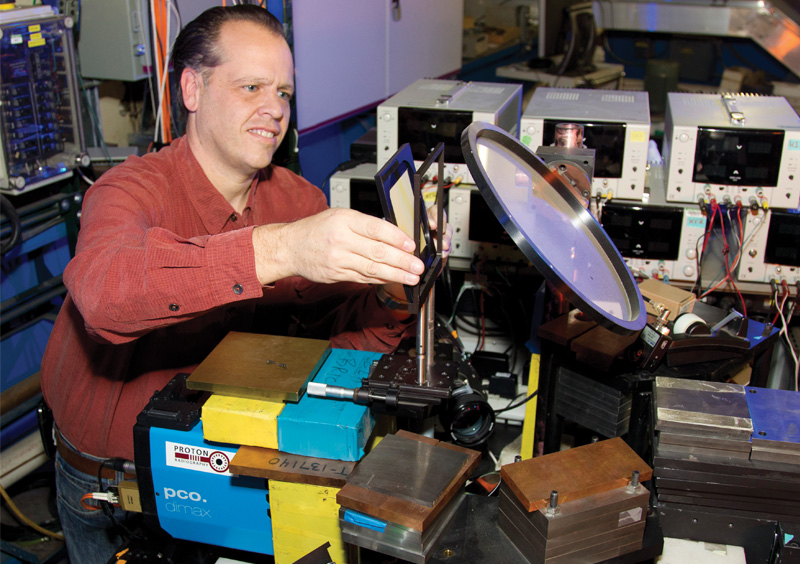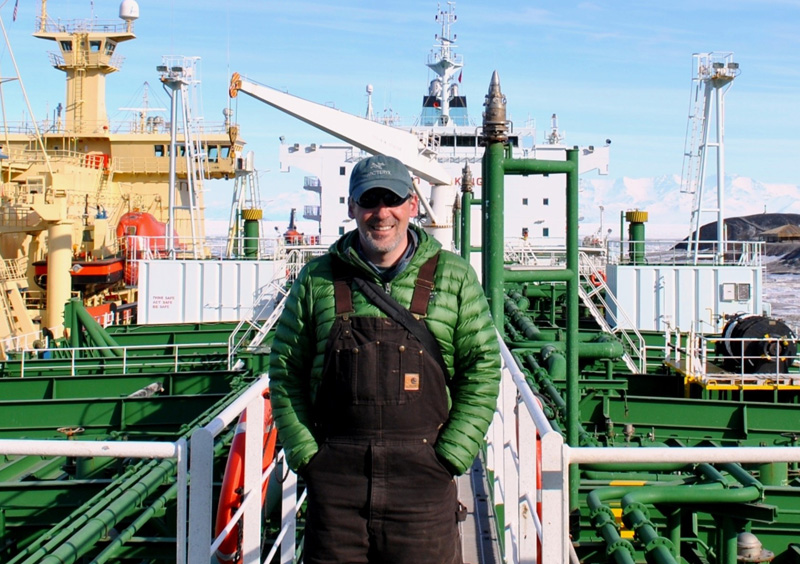In her lab at Los Alamos National Laboratory, physicist Suzanne Nowicki holds up a diamond and ponders new technologies for lunar space stations. Sandwiched between plates of metal studded with real gold electrodes, the hidden diamond has the same kind of desirable attributes as carbon, making the device a compelling candidate for detecting neutrons.
Central to a two-year project she's leading with funds from the Laboratory Directed Research and Development program, her task is first to get to know what this European-made diamond detector can do on Earth and then figure out how to adapt it to perform in harsh conditions for NASA missions on our moon, which are a step toward sending the first astronauts to Mars.
Los Alamos is part of NASA's Fission Surface Power Project, which looks to industry and the U.S. Department of Energy for new capabilities to further space nuclear power and propulsion technologies.
Instead of powering moon bases with solar energy, NASA plans to use small nuclear reactors that can supply safe, reliable power for astronauts and robots, supporting sustainable lunar living in an extremely cold environment to prepare for missions to Mars. Specifically, NASA envisions an electricity-generating fission power system that could support 30 households for at least 10 years.
"If the United States puts a nuclear reactor on the surface of the moon for human exploration and I'm a part of that project, it would be a bigger deal than anything else that I've done," Suzanne says.
Suzanne's team aims to design and build a radiation monitor, with a prototype ready in about two years for a potential experimental flight before flying onboard NASA's Artemis missions. The idea is to integrate a neutron detector into the spacecraft to monitor radiation levels emitted from the reactors and to gauge the health of reactor operations, she says.
The diamond detector sends out signals that appear on Suzanne's laptop screen for analysis. "Putting instruments in space is very challenging because when we transport everything in space, it takes a lot of fuel," she says. "This is extremely small, so it's very convenient for space applications, and this type of material is very radiation hard, which means it can work longer than other typical instruments. In space there is a lot more radiation than on Earth, especially near a nuclear reactor. Radiation is known to cause damage and can kill a detector quickly."
While the diamond detector is a strong candidate, this off-the-shelf product can't survive space conditions unless the electronics are rebuilt for extreme temperatures and a vacuum. Suzanne's group has expertise in making electronics for space.
As Suzanne's team develops the neutron detector prototype, they will compare the diamond-based approach with another option, a fission chamber.
Moons have always loomed large in her life
As a child, Suzanne found a kindred spirit in her grandfather, a high school physics teacher who kept a refractive telescope on the tiny balcony of his apartment. He had a habit, almost a ritual, of tracking the sun's spots to see how they changed and moved over time.
"I would go with him on the balcony, and I would watch him draw the sun and draw the sunspots, so that was fun," she says. "That was the first thing that attracted me to the sky." Her grandfather lived in Grenoble, a scientific mountain town in southeastern France, and every summer they gazed at sunspots, the moon and Jupiter together and talked about astronauts and mysteries of the universe.
The year before he died, he gifted Suzanne with a telescope of her own. She was 15. Her fascination with moonscapes began with that special telescope. At her mother's place, Suzanne's bedroom had a skylight, and she'd squint through her telescope and make pictures, like her grandfather had. It was her escape, her solace on fitful nights when she could not sleep, or when she missed him.
Both Suzanne and her sister became physicists, and their mother — a pharmaceutical researcher who bought them an astrophysics book — supported their interests along the way. "When I worked at NASA's Goddard Space Flight Center, my sister worked at the European Space Agency. My mom was proud," Suzanne says.
Now, as a Los Alamos planetary scientist, NASA projects are in Suzanne's portfolio and her instruments are on course to travel to other planets.

Many moons and balloons
Suzanne has been part of various space missions, developing instruments to take measurements of distant objects in space or even on objects in space. Radiation detection has been a focus of her career: at the University of Michigan (where she got her doctorate in applied physics), NASA's Goddard Space Flight Center and the Lab (since 2015).

Suzanne with a payload containing a space instrument, which was recovered more than 250 miles away from the location of a high-altitude balloon launch in New Mexico.
"Basically, the Dragonfly mission is an octocopter that's going to fly a suite of instruments on the surface of Titan, and one of them is that instrument that I worked on," she says. The instrument also might be used to study the surface of Phobos, a Mars moon.
Balloon flights to test space instruments in near-space conditions are some of Suzanne's favorite stories. In 2020, she was on a team that showed that a high-altitude balloon, outfitted with sensors, cameras and a GPS, could fly payloads to test their readiness for space at a fraction of the cost and time of other methods.
The next year, she participated in a NASA program to demonstrate a new capability to hand-launch heavier payloads using balloons.

In 2022, Suzanne helped test a neutron detector called TinMan through NASA's Columbia Scientific Balloon Facility. The device detects thermal neutrons in an airplane environment, giving the aerospace industry a standard by which it can evaluate its semiconductor parts. On that project, Suzanne reconnected with Stephen Wender from the Los Alamos Neutron Science Center, who has known her since she was a postdoc in Physics division. "He's been helping me with my career a lot," she says. "He's funny, and it was so fun to fly TinMan together."
Now in her radiation monitor project for NASA's moon to Mars effort, she's teaming up again with Stephen.
"Suzanne is a very good leader in a way that makes you feel you're contributing. She doesn't compete with you," Stephen says. "She just loves working with NASA space projects, the applications of instruments in space and building things for space. She's tenacious, but not in a bad way. So, I'm happy to support her in that."
LA-UR-24-32488






